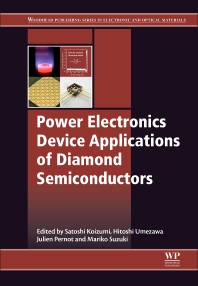Books in Power electronics
Books in Power electronics

Smart Traction Power Supply Systems for High-speed Railways
- 1st Edition
- Shibin Gao + 1 more
- English

Real-Time Simulation Technology for Modern Power Electronics
- 1st Edition
- Hao Bai + 3 more
- English

Power Ultrasonics
- 2nd Edition
- Juan A. Gallego-Juarez + 2 more
- English

Power Electronics Device Applications of Diamond Semiconductors
- 1st Edition
- Satoshi Koizumi + 3 more
- English

Wide Bandgap Power Semiconductor Packaging
- 1st Edition
- Katsuaki Suganuma
- English

Control of Power Electronic Converters and Systems
- 1st Edition
- Frede Blaabjerg
- English

The Power Grid
- 1st Edition
- Brian D’Andrade
- English

Power Supplies for LED Driving
- 2nd Edition
- Steve Winder
- English

Power Electronics and Motor Drive Systems
- 1st Edition
- Stefanos Manias
- English

Power Converters with Digital Filter Feedback Control
- 1st Edition
- Keng C. Wu
- English